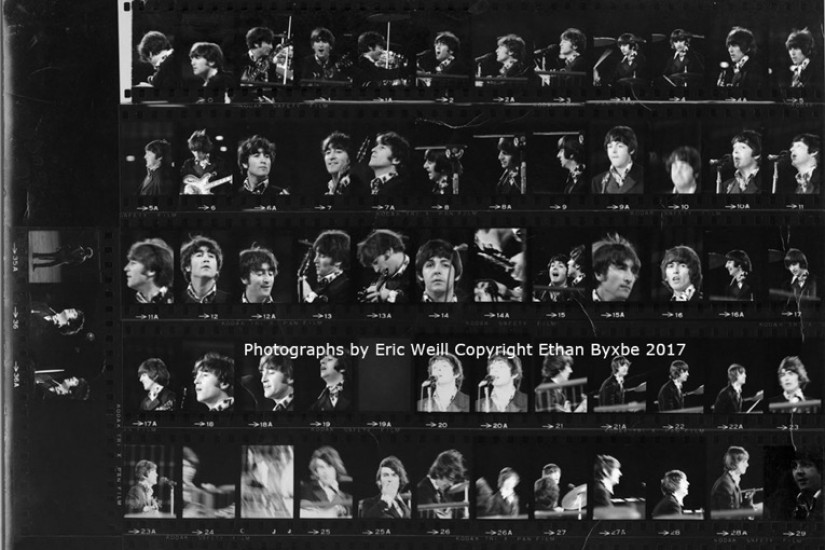When Seabury got home, he put the contact sheet in a drawer, where it lay relatively undisturbed for years. “Every so often, I’d pull it out and think, ‘These are really great, they deserve some attention,’ but that was about it. Then, years later, I read an article in the “San Francisco Chronicle” by Joel Selvin about the Beatles’ last concert on August 29, 1966, at Candlestick Park. The article featured the famous photos taken that day by Jim Marshall. Looking at the pictures, I thought, ‘Those shirts look familiar.’ So I pulled out my contact sheet and sure enough, same shirts. That’s when I realized the photos on my contact sheet were taken at Candlestick.”
But not by Jim Marshall. In fact, the identity of the photographer who took the photos on the contact sheet remained a stubborn mystery—to Seabury, anyway—for many years. Finally, in 2015, Seabury decided to solve this photographic puzzle. “The 50-year anniversary of the Beatles’ final concert was coming up,” he says, “so I started asking around to see if anyone I knew could identify the photographer. One by one, I contacted all the Beatles collectors I could find, as well as all the photographers I knew who were on the scene at that time. I just kept coming up zero.”
Concurrently, Seabury’s notion that the photographs deserved “some attention” was moving forward in the form of an exhibition to be called “Lost and Found Beatles” and scheduled to open on August 29, 2016, the 50th anniversary of the Candlestick show, at The Reclaimed Room Gallery in San Francisco. Seabury’s wife, the photographer, author, and educator Ruth E. Kaiser, helped him create a Kickstarter campaign to raise the money required to turn the images on the contact sheet into prints for the exhibition. Photographer Richard Blair offered to scan the sheet at high resolution. Photographer Amy Snyder, along with Blair, Kaiser, and Mark W., spent untold hours working with the scans in Photoshop to rid them of the dust and dirt that had been captured during scanning.
When the final images were printed, everyone who saw them agreed that the photographs were indeed as special as Seabury believed them to be.
